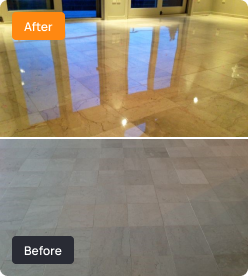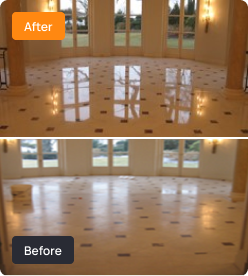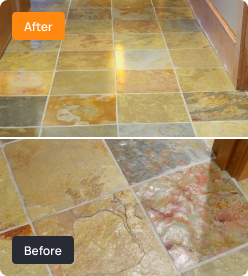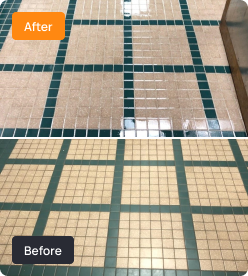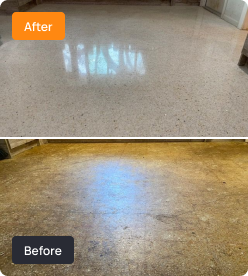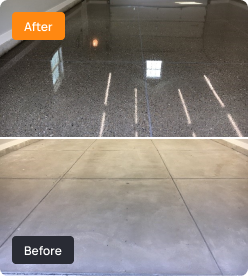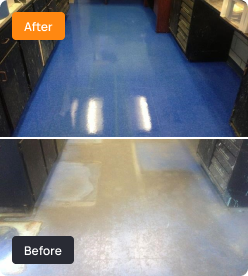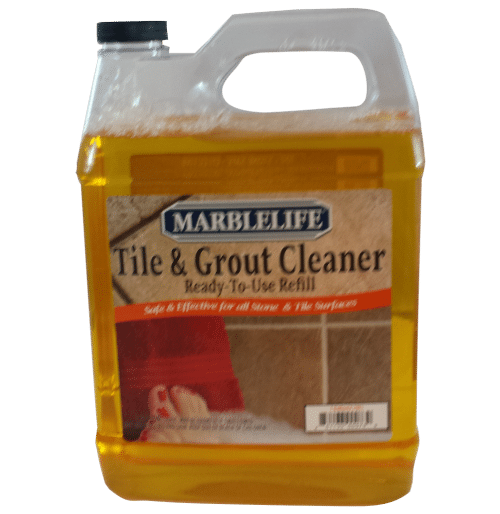Can You Pass This Tile and Stone Care Quiz?
If your tile or stone looks dull and dingy, cleaning isn’t always as straightforward as you might hope. In fact, you may be hurting your surfaces instead of helping them. Take this quick MARBLELIFE® fact-or-fiction quiz to test your stone care knowledge. 1. True or False? If you really want to clean your tile or […]


If your tile or stone looks dull and dingy, cleaning isn’t always as straightforward as you might hope. In fact, you may be hurting your surfaces instead of helping them. Take this quick MARBLELIFE® fact-or-fiction quiz to test your stone care knowledge.
1. True or False? If you really want to clean your tile or stone floor, use a wire brush.
False. While tile and stone are highly durable, they’re not invincible. Scrubbing with abrasive utensils may leave permanent scratches or scrub away the sealant. Wear is the second most common cause of floor damage, and the use of harsh wire brushes accelerates wear. They can create small spaces in grouted surfaces where moisture and bacteria can hide. And steel wool will also leave behind small metal fragments that can rust and stain. A professional will never apply steel to a surface without walking the surface with a metal magnet to find and remove such rust stain creating fibers. If you feel the need to scrub with a wire brush, you’re probably not using the right cleaning products, or your surface is no longer “cleanable,” due to damage that looks like dirt, and it’s time to call a professional. As always, the right tool makes any job easy. In this case, use a mild yet effective product like MARBLELIFE® Tile & Grout Cleaner to safely clean your tile and grout.
2. True or False? Strong, acidic cleaners are the best option for removing grimy dirt and soap scum.
False. Cleaning is not about destroying dirt; it is about lifting it and removing it from the surface. Sure, acidic cleaners will eat away dirt — but the problem is, they won’t stop there. Acids will damage and remove traditional sealers as well, removing a critical surface protection that keeps grout from staining, resulting in an acceleration of stained grout problems. Attacking not just the dirt, acids can eat away grout and stone surfaces too, creating even bigger problems and inexpensive repairs. When acidic cleaners are used on marble, travertine, terrazzo or limestone surfaces, they can remove the natural shine, dissolving pits into the surface that trap dirt and potentially leave behind a white haze that cannot be removed without professional assistance. If you are using a product that is lemon-fresh, orange scented, vinegar-infused or going green with vinegar, the damage has begun, and continued use will result in expensive restoration needs. MARBLELIFE® can help by identifying the problem, restoring a clean and cleanable surface, resealing your grout and offering guidance on the right cleaning products to use in the future.
3. True or False? You can keep your stone and tile surfaces clean using soft cloths or sponges.
True. All you should ever need is a soft microfiber towel, cloth or sponge — IF you’re giving your surfaces the proper care and using surface-safe cleaners AND they are properly sealed. Care will be virtually effortless. Use a damp mop to pick-up debris without leaving puddles on your floor — and a soft microfiber towel or sponge to scrub away more stubborn dirt.
4. True or False? Bleach is best when cleaning dirty grout.
False. When you find yourself confronted with dingy grout lines, your first impulse may be to reach for bleach. Although bleach disinfects, it does not actually clean tile and stone surfaces. Use a mild yet effective cleaner like MARBLELIFE® Tile & Grout Cleaner for your everyday maintenance needs and MARBLELIFE® MaxOut Tile & Grout Cleaner for periodic deep cleaning.
Cleaning should be simple, quick and effective. It is with the right products. If frustration has settled in, or you are struggling with a cleaning issue, it is likely a symptom of damage. Contact the pros at MARBLELIFE® who can fix the cause of stains at the source without damaging surfaces. We’ll come to your home, evaluate your situation and provide you with a free, no-obligation estimate to revitalize your tile and stone. We have COVID-19 safely protocols in place for added protection. Call your local MARBLELIFE® to schedule your free consultation today.


